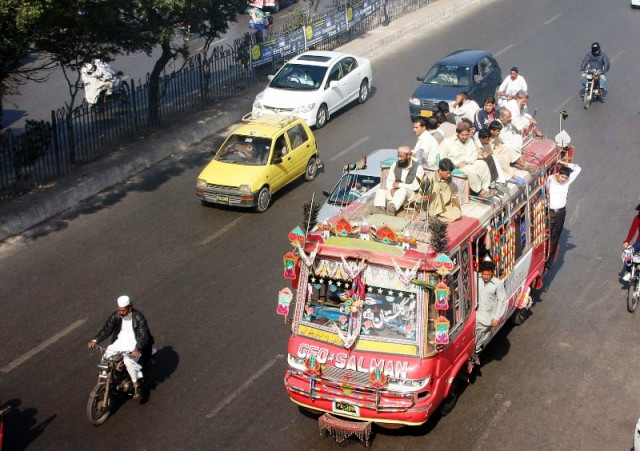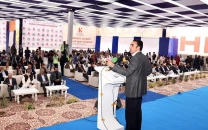Commuters demand removal of rooftop racks on minibuses
The Supreme Court, too, had issued directives to put a stop to this practice.

High-tech signals and sensors to be restricted to special bus track. PHOTO: PPI/FILE
The issue attracted the attention of the apex court last year while hearing the Karachi law and order case and instructions were issued to put an end to this practice. However, the then government and subsequently the caretaker setup have done little to comply with the Supreme Court order.
“All minibuses carry passengers on their roofs and charge the full fare for it,” complained Abdul Kareem, who is a regular on the roof of Shiraz coach as he commutes to the old city areas for work along with dozens others. “If the government cannot persuade the transporters to remove their roof racks, they should at least announce a special fare for such commuters. Ideally it should be half of the normal fare.”
The students are also unhappy. “It’s a shame that our elected representatives even failed to upgrade the system while Lahore has a modern metro bus system,” said Saima, a student of the University of Karachi.
The current state of affairs becomes all the more glaring when our elders wax lyrical about the well-oiled tram system of the yesteryears. Even in years after independence, Karachi had a decent surface rail-based transport system that went by the name of Karachi Circular Railway.
Farhan Zafar, a teacher, said that corrupt bureaucracy is just about everywhere but if the political leadership is sincere things could change.
Published in The Express Tribune, May 1st, 2013.

















COMMENTS
Comments are moderated and generally will be posted if they are on-topic and not abusive.
For more information, please see our Comments FAQ